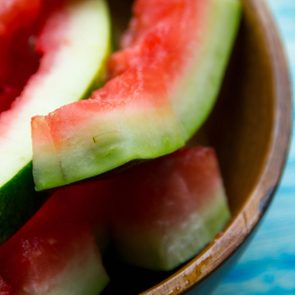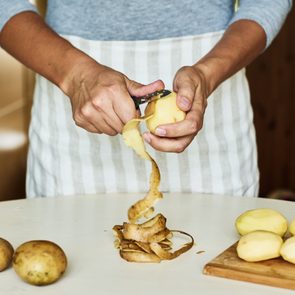Wildly Nutritious Ways to Upcycle 7 Food Scraps, from a Chef-Nutritionist
Updated: Nov. 16, 2023
You already love these foods! Now, this dietitian's intriguing ideas will give you clever new ways to enjoy more of them. (We bet you didn't know this about corn silk...)
Our editors and experts handpick every product we feature. We may earn a commission from your purchases.
Use more of the foods you love
You may not think twice about tossing out the peel of eggplant or the seeds from squash, but it’s time you should. Hidden within those food scraps are nutrients galore, and a wealth of cool new ideas for testing them out in your kitchen.
Limiting food waste and eating more plants is good for you, your wallet… and, yes, Mother Earth. While it might not be practical for all of us to switch to a plant-only diet, the next best thing may be to simply eat more of your plants. Think the skin, peel, seeds, leaves, or woody stems of fruits and vegetables—as Sherene Chou, MS, RDN, co-founder of food + planet explains, giving these small tips a try “can add up to a big difference environmentally and nutritionally.” (We love RIND Snacks, which leave the skin on to reduce waste and add nutritional value to your dried fruit!)
And, how. ReFED, a national food waste research nonprofit, estimates that the equivalent of 90 billion meals goes uneaten in the U.S. per year. To be a part of the solution while also enriching our diets, here’s how some of my registered dietitian colleagues and I love to utilize the parts of produce that often get discarded.
Are you inspired by these wellness tips? Also read Why This Podiatrist Loves Hoka Shoes for Foot Health.
Corn silk

Transform into: Corn silk crunchies
You know corn silk as the long, feathery plant strands beneath a fresh corn husk. But want to know something wild? A study in Biomedicine & Pharmacotherapy found that corn silk offers significant antioxidant activity and may play a beneficial role in reducing oxidative stress to help manage type 2 diabetes. (A caution: While it’s most likely safe, you should still avoid corn silk if you have a corn allergy or take any medication that affects your potassium levels.)
- To prepare corn silk crunchies: Compost or toss any black silks. Then dehydrate all remaining corn silks in a 200-degree Fahrenheit oven for a few hours. Sauté the dried silks in sunflower oil or olive oil until crisp, then season with just a little salt and pepper.
- Enjoy: Break up crunchy corn silks and sprinkle them onto salads, in Mexican dishes, corn chowder, or chili.
Love it? You may also like Is Popcorn Healthy? 9 Reasons You Need Popcorn in Your Diet.
Winter squash scraps
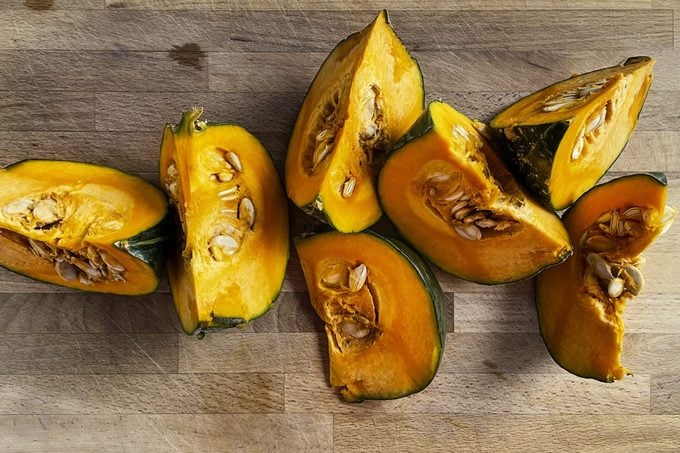
Transform into: Squash-flavored hummus
Got a whole butternut squash or pumpkin? You can use the outer peel, flesh, seeds (and shells of the seeds), and pulp. Just like the flesh, the pulp of squash is highly nutritious, offering dietary fiber; beta-carotene for immunity, your eyes, and skin; and plant phenolic compounds that can help fight disease.
- To prepare squash-flavored hummus: Sauté the stringy flesh in a little oil (again, my favorites are sunflower or olive oil), until it’s cooked through and has caramelized. Purée in a blender with your favorite hummus, plus a dash of salt and cayenne.
- Enjoy: Serve your squash hummus in a bowl with crudités, sliced pita, or whatever your favorite hummus dippers are.
- Tip: If you’re making pumpkin or butternut squash soup, add pulp in with the broth, then purée into a soup that will deliver a creamy body. Roast seeds for sprinkling on your squash-flavored hummus or soup, too.
Broccoli stems
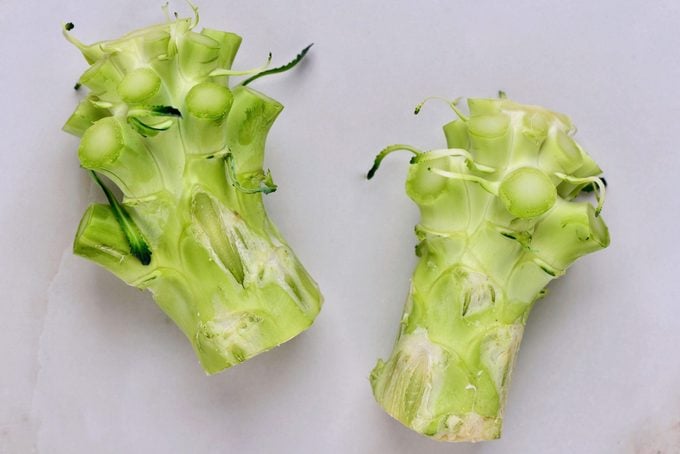
Transform into: Breakfast broccoli coins
Trying to get more fiber? Broccoli stems are packed with it. Plus, a 100-gram (3.5-ounce) portion of raw broccoli stalks offers 93 milligrams of vitamin C (that’s 103 percent of the Daily Value [DV]), 71 micrograms of folate (18 percent DV), and only 28 calories. Like broccoli florets and leaves, the stems contain sulforaphane, an anti-cancer compound.
- Prepare your broccoli coins: Slice broccoli stems very thinly, close to the width of a coin. Sauté in a little oil over medium heat to fully cook through and gently brown. Season with dried sage, thyme, and black pepper (like breakfast sausage). Serve after the broccoli coins are browned, or chill them for later use.
- Enjoy: Toss your broccoli coins into eggs, a vegan scramble, or a breakfast burrito… or arrange them onto avocado toast. (For the highly adventurous palate, consider slicing these into savory oatmeal.)
Eggplant peel
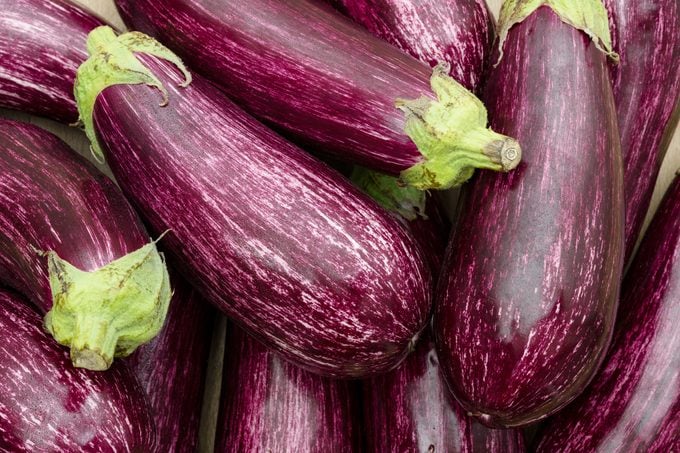
Transform into: Marinara with more
It’s a trick some Italian mothers use: sneaking secret veggies into a beloved dish, so the family gets more nutrition than they realize. An eggplant is perfect for this.
Here’s why: that deep, purple hue is thanks to anthocyanins—naturally-occurring pigments that may play a role in reducing risk for chronic diseases. Research published in Plants in 2021 suggested this includes potential anti-inflammatory, anti-cancer, and anti-diabetic properties. (Interestingly, one study also found the peel may offer anti-Salmonella activity.)
- Prepare your eggplant marinara: Roast whole eggplant in a 400-degree Fahrenheit oven for about 40 minutes. Then halve and scoop out the flesh for recipe use (such as baba ghanoush). Blend the peel with three cups marinara sauce, and simmer with a sprinkling of red wine vinegar, olive oil, and salt.
- Enjoy: Serve anywhere you love marinara sauce, like over pasta, on pizza, over lunchtime scrambled eggs, or for dipping.
- Tip: Consider choosing organic eggplant to reduce intake of pesticide residues.
Pineapple core
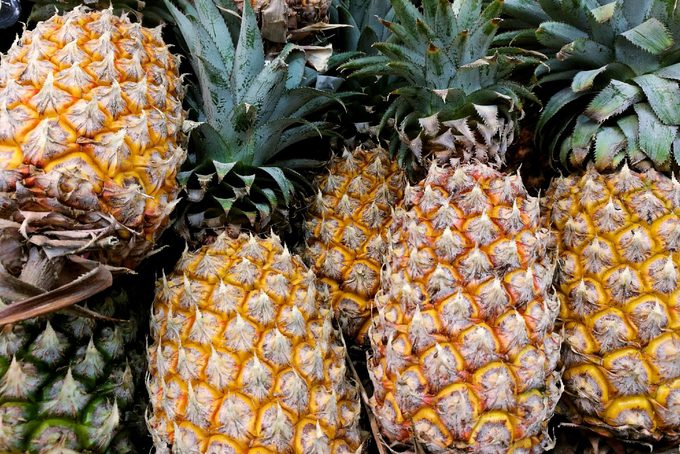
Transform into: Pineapple shreds
The health benefits of pineapple are impressive. For starters, pineapple may act as a cardioprotective agent and is packed with fiber that may help improve digestion. Notably, one bioactive enzyme you’ll find in pineapple—including the core—is bromelain, which may offer anti-cancer and anti-microbial properties, among others.
You may not have known that a pineapple core is edible, but you might find that its firmness makes it easier to work for cooking with than the pineapple’s flesh. Pineapple core can bring an extra zing of flavor to oatmeal or a savory salad, almond pilaf, stir-fry, tacos, or pizza.
- Prepare pineapple shreds: Grate the raw core with your kitchen grater. Chill the purée until you’re ready to use it.
- Tip: For smokiness (yum!), grill your pineapple core before you grate it.
Watermelon seeds
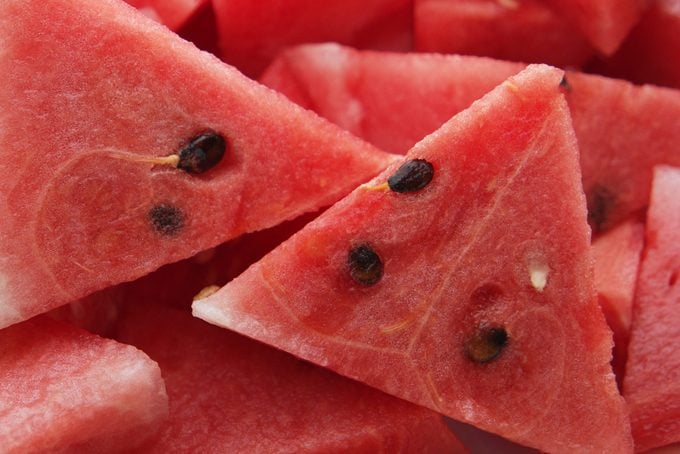
Transform into: Spiced, roasted seeds
Those toothsome little buggers become more enjoyable when you find out what they can do for you. A ounce-ounce serving of watermelon seeds provides three milligrams of zinc (27 percent DV), and two milligrams of iron (11 percent DV), along with healthy fats and a substantial eight grams of plant protein (16 percent DV).
As if you needed more convincing to eat those earthy seeds, research published in the International Journal of Biochemistry Research & Review suggested that watermelon seeds may offer antibacterial properties. Also, watermelon seeds contain a significant amount of arginine (an amino acid), which may benefit heart health and even sexual health in men.
- Prepare spiced, roasted watermelon seeds: Wash and dry black watermelon seeds; lightly toss with oil and sea salt. Roast in a 325-degrees Fahrenheit oven for 20 minutes, then add spices, like chili powder.
- Enjoy: Sprinkle onto salad or munch as a snack.
Celery leaves
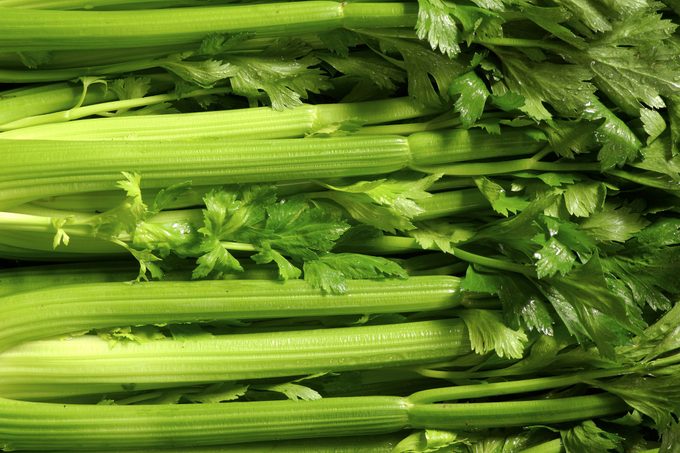
Transform into: Superfood sauces
You know celery is good for you; it turns out its leaves are noteworthy, too. According to 2021 research published in Bioinformation, the leaves of celery are a potent source of antioxidants. What’s more, a study published in the Journal of Food Biochemistry suggested celery leaves may be beneficial in the prevention or treatment of inflammatory diseases. Plus, celery leaves offer what some people consider a pleasant bitterness and brightness to cuisine.
- Prepare your celery leaf sauce: At serving time, mince celery leaves and—in a one-to-one ratio—stir into pesto, mayo, mustard, ketchup, salsa, or guacamole.
- Enjoy: Serve just like your usual sauces or condiments.
- Tip: Also simmer celery leaves into soups and stews for added flavor and benefit.
Other ways you can fight food waste
Food loss happens from farm to fork. You can do something about what goes onto your fork!
Buy brands using discarded food parts (upcycled ingredients), like from Upcycled Food Association-affiliated companies. Order from online grocers that rescue food, like Misfits Market. Choose “ugly” produce. Savor leftover dishes (I like to call this “vintage cuisine”). Freeze extras. And compost what’s truly inedible, when possible.
Get wiser about your food with The Healthy newsletter. And, learn more right here:















